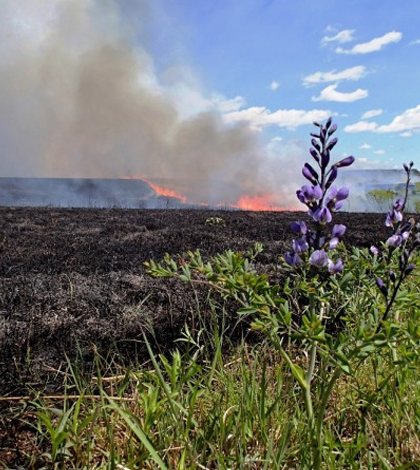More Grasslands Burning Could Preserve Kansas’ Flint Hills Ecosystems

Blue wild indigo flower at the edge of a burning prairie. (Credit: Kansas State University)
In order to preserve delicate ecosystems, a new study advocates for increased cullings of grasslands, according to a Kansas State University release. University researchers say planned burning of the Flint Hills grasslands should be more regular than every three years.
Their study utilized 40 years’ worth of data collected from Kansas State’s Konza Prairie Biological Station and applied it to existing Flint Hills fire maps ranging from 2000-2010. The fire maps indicated that half of the prairie grass is burned at least every 3-4 years and could become shrubland.
More infrequent fire burning could cause the landscape to transform into forest in a few decades. The ecosystem’s shift could endanger its existing dependents. The grasslands provide food for cattle, support the economy, shelter prairie chickens and filter freshwater.
However, increased burning means more smoke. Land managers are collaborating with smoke management and fire engineers to find an approach that will meet the needs and is considerate of nearby communities.
Top image: Blue wild indigo flower at the edge of a burning prairie. (Credit: Kansas State University)





0 comments